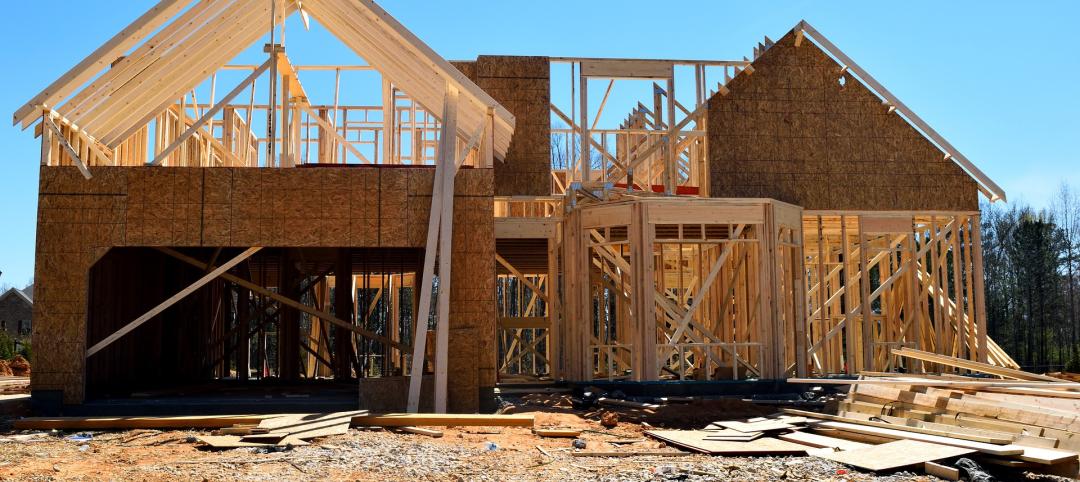Nearly half of construction managers still capture critical jobsite quality data manually. One-third still use paper and pen to track data.
These are some of the key findings from a survey of more than 500 executives and managers in the construction and engineering fields. The survey, conducted in February by TrackVia, an operational workflow platform, exposes a jobsite management environment that, for many companies, is antiquated and potentially prone to more errors.
Three quarters of the executives and managers polled said that ensuring a high quality of work is the most important part of their jobs. But the process by which they strive to achieve that quality is often time-consuming and redundant.
Managers concede that collecting data manually presents three challenges:
•Inadequate levels of details attached to work and change orders
•Incomplete work quality observation data
•Incomplete information to substantiate claims
Yet, the survey found that a large portion of change- and work-order initiation is manual, with more than 80% of managers reporting email as their primary means of communication, followed by meetings and calls via radio or cell phone. This contributes to why 65% of managers surveyed also said that work orders or changes get missed some to all of the time, lengthening a project’s time-to-completion.
Nearly two-thirds of the managers polled said the availability of information, like change orders, was the hardest to capture accurately. Part of the problem seems to be that jobsite data often gets funneled through multiple sieves.
Half of managers said their data must go through five different steps to get the information into a software or database system, and half of executives said their data goes through the same number of steps before it can be used by team members for reporting and analytics.
Three quarters of executives are using multiple systems to house project and site data. Eighty-eight percent of execs who use four or more data systems spend at least 1,300 hours per year trying to assemble data into usable reports.
Consequently, 61% of executives polled said they are making decisions using old data. “Manual processes inhibit executives and managers from making timely decisions and from staying ahead of potential issues before they become big issues,” the survey’s authors state. “Executives are also challenged … [by] not having the information they need for compliance and audits.”

Incomplete and erroneous work orders and changes still plague jobsites where data are collected manually. Image: TrackVIa.
The majority of executives and managers agree that manual data collection increases the costs related to work quality and employee downtime.
Fifty-seven percent of executives reported costs related to inadequate or damaged supplies, materials, and equipment, while 58% of managers cited liquidated damages due to project delays.
Forty-five percent of managers acknowledged they could adequately substantiate claims only 51-80% of the time. Half of the executives could legally substantiate only 50-79% of claims with daily reports and other documentation.
TrackVia’a recommendations to change this deficient dynamic starts with the implementation of a streamlined, digitized data collection process, which more than half of the executives believe would alleviate several of the issues related to manual data entry.
The report noted that using dynamic mobile apps would enable firms to capture information from any device—online or offline. Job site teams could use standardized forms to enter data, scan barcodes, geotag locations, attach photos, and document weather conditions using any iOS or Android device.
Aggregating all data through a single system wouldn’t hurt, either. “Corporate offices need to simplify their processes for turning job site data into usable reports. By digitizing data acquisition on the job site and integrating it with other systems, firms get accurate, real-time visibility across their entire organizations. Firms can create custom dashboards and reports and publish those for executives and managers so everyone is on the same page.”
Related Stories
Healthcare Facilities | Dec 19, 2023
A new hospital in Duluth, Minn., is now the region’s largest healthcare facility
In Duluth, Minn., the new St. Mary’s Medical Center, designed by EwingCole, is now the largest healthcare facility in the region. The hospital consolidates Essentia Health’s healthcare services under one roof. At about 1 million sf spanning two city blocks, St. Mary’s overlooks Lake Superior, providing views on almost every floor of the world’s largest freshwater lake.
Government Buildings | Dec 19, 2023
New Pennsylvania State Archives building holds documents dating back to 1680
Work was recently completed on a new Pennsylvania State Archives building in Harrisburg, Penn. The HGA-designed, 146,000-sf facility offers numerous amenities, including computers, scanners, printers, a kitchenette with seating, lockers, a meeting room, a classroom, an interactive video wall, gallery, and all-gender restrooms. The features are all intended to provide a welcoming and comfortable environment for visitors.
MFPRO+ News | Dec 18, 2023
Berkeley, Calif., raises building height limits in downtown area
Facing a severe housing shortage, the City of Berkeley, Calif., increased the height limits on residential buildings to 12 stories in the area close to the University of California campus.
Green | Dec 18, 2023
Class B commercial properties gain more from LEED certification than Class A buildings
Class B office properties that are LEED certified command a greater relative benefit than LEED-certified Class A buildings, according to analysis from CBRE. The Class B LEED rent advantage over non-LEED is about three times larger than the premium earned by Class A LEED buildings.
Codes and Standards | Dec 18, 2023
ASHRAE releases guide on grid interactivity in the decarbonization process
A guide focusing on the critical role of grid interactivity in building decarbonization was recently published by ASHRAE. The Grid-Interactive Buildings for Decarbonization: Design and Operation Resource Guide provides information on maximizing carbon reduction through buildings’ interaction with the electric power grid.
Sustainable Design and Construction | Dec 14, 2023
Suffolk Construction establishes Suffolk Sustainability Group
Design veterans Steven Burke and Michael Swenson will lead the new sustainability initiative for Suffolk.
75 Top Building Products | Dec 13, 2023
75 top building products for 2023
From a bladeless rooftop wind energy system, to a troffer light fixture with built-in continuous visible light disinfection, innovation is plentiful in Building Design+Construction's annual 75 Top Products report.
Giants 400 | Dec 12, 2023
Top 15 Veterans Affairs Facility Construction Firms for 2023
Walsh Group, Turner Construction, BL Harbert, and Hoar Construction top BD+C's ranking of the nation's largest Veterans Affairs facility general contractors and construction management (CM) firms for 2023, as reported in Building Design+Construction's 2023 Giants 400 Report.
Giants 400 | Dec 12, 2023
Top 35 Military Facility Construction Firms for 2023
Hensel Phelps, DPR Construction, Walsh Group, and Whiting-Turner top BD+C's ranking of the nation's largest military facility general contractors and construction management (CM) firms for 2023, as reported in Building Design+Construction's 2023 Giants 400 Report.
Contractors | Dec 12, 2023
The average U.S. contractor has 8.5 months worth of construction work in the pipeline, as of November 2023
Associated Builders and Contractors reported today that its Construction Backlog Indicator inched up to 8.5 months in November from 8.4 months in October, according to an ABC member survey conducted Nov. 20 to Dec. 4. The reading is down 0.7 months from November 2022.

















